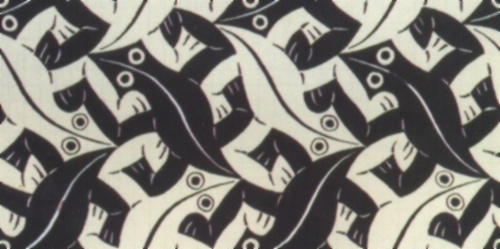How do you draft Khans of Tarkir? Ask four people and you are likely to get at least four different answers, maybe more. The pros (and the rest of us) have developed wildly divergent takes on the format. Most of these strategies seem to work, too. Everything from two-color aggro to five-color control can have success. Khans is a deep, balanced format that rewards good deckbuilding and tight play. Is there a “best” strategy?
Frank Karsten put forward the latest controversial take on the format over at Channel Fireball. Based on the testing from his European “Cabin Crew” Pro Tour team, he argues that blue is the best color and takes a skeptical view of five-color good stuff decks. On Twitter, Andrew Cuneo questioned how Frank could rate Dead Drop as a mediocre playable. Many other pro players chimed in agreeing that Dead Drop is a powerful card that is worth picking highly. A quick read through the comments to that article provides a glimpse into various other dissenting views as well.
How is it that, even after a month of playing with the set, so many different approaches to the format seem viable? The simple answer is that the format is deep and will continue to develop over the next two months. But that doesn’t tell us much about how to draft Khans of Tarkir other than to keep trying. I’ve been trying to figure out for weeks now what it is about Khans that makes it so hard to pin down what exactly we are supposed to do to be successful in draft.
There is a fundamental tension in Khans draft that I think is the root cause of the various competing strategies. On the one hand, the format is very slow. Three-color cards, expensive morphs, and lands that enter the battlefield tapped all push the games to go long and come down to powerful trump cards. On the other hand, tempo plays a major role in how the games play out. Being the first person on board with morphs gives you a big tempo advantage, and there are numerous spells like Crippling Chill that provide additional tempo. Delve also fuels tempo strategies by enabling players to cast two or three major spells in a single turn.
These two aspects of the format are truly at odds. Slow formats make each individual turn less important as the players end up jockeying for position over many turns while they set up their respective plans for victory. Tempo formats, by contrast, pack a lot of action into a few crucial turns, where one player can either win quickly or set up an overwhelming board advantage that will lead inevitably to a win even if it takens many turns to actually end the game. And yet Khans draft is both a slow format and a tempo format.
The morph mechanic plays into both aspects. Morph is obviously a “slow” mechanic because you generally spend two turns worth of mana to play a creature face down and then later flip it face up. Most morphs cost more total mana to use both sides than to simply play the creature face up. Plus, we will generally fill up our creature curves with expensive morphs while still being able to play them as three drops to smooth our early development. But morph is also a “tempo” mechanic. Many morphs have extra effects that trigger on flipping them face up, and usually the flip cost is cheaper than hard casting. Flipping a Sagu Mauler on turn five is a huge tempo swing. And on the flip side, the expensive mana commitment required by morph makes them especially vulnerable to opposing tempo plays. Having your Snowhorn Rider bounced for two mana with Force Away after you spent eight mana over two turns to set it up is a major blowout.
Getting back to draft strategies, you can see how players can reach differing opinions on how best to attack the format. Those who put more emphasis on the slow aspects of the format will gravitate toward powerful four- or five-color decks, while those who put more emphasis on the tempo aspects will prefer streamlined two-color decks. Three-color clan decks can fall anywhere between those two poles, depending on the clan and how you focus your draft picks.
So which approach is better? I think the answer is both. The absolute best decks in Khans draft will be able to switch between tempo and slow advantage depending on the matchup and how the cards are drawn. Even the decks that can’t quite switch seamlessly and thus focus on one strategy need to be built with an awareness of the competing strategy. If you are a slowly developing deck, you need to defend against quick starts and play carefully to minimize the damage done by tempo plays. And if you are a tempo deck, you need to have a plan for the long game.
Here’s an example of a powerful deck I drafted that is able to play both controlling and tempo games:
Sultai Control Two Drops
Now obviously it helps to get passed two Rattleclaw Mystics, but besides that I think this is a reasonable draft deck. And boy was this deck powerful. At its core, the deck is two-color blue-green tempo with tons of early plays. But it’s also a Sultai control deck with powerful finishers and removal. Not surprisingly, the deck leans heavily on morphs to enable playing both ways. For example, the splashed Abzan Guide (which was free off my dual- and tri-lands) can beat down as a Gray Ogre early, or it can flip late to help stabilize a race and pull ahead.
The best cards in Khans draft, the truly high picks, are ones that play both roles. Heir of the Wilds is a great attacker on any turn of the game, while also becoming a better blocker the later the game goes. The card is so efficient that it effectively gains tempo even while being a strong control card. Icefeather Aven likewise can be the start of a devastating curve as a 2/2 flier on turn two, or it can come down later as a morph and provide a powerful safety valve when you are trying to stabilize the board and turn the corner to attack for the win.
Sidisi, Brood Tyrant surprised me as well. It can be unbeatable as part of a tempo curve, playing the mini-Grave Titan role to perfection. But Sidisi also provides good defense while discouraging your opponent from attacking too much. The threat of Sidisi attacking and making tokens will cause many opponents to hold back extra blockers, which alleviates the pressure and allows your Sultai deck to power up for the late game. Sidisi is a real bomb.
So where do I come down in the debate over how to draft Khans of Tarkir? I agree with everybody! Build a deck that can switch roles. Play a lot of morphs. Make sure some of the morphs can flip cheaply. Get some of the powerful gold cards. But no matter what else, have a plan to harness both the slow and tempo elements of the format.
Carrie O’Hara is Editor-in-Chief of Hipsters of the Coast.




